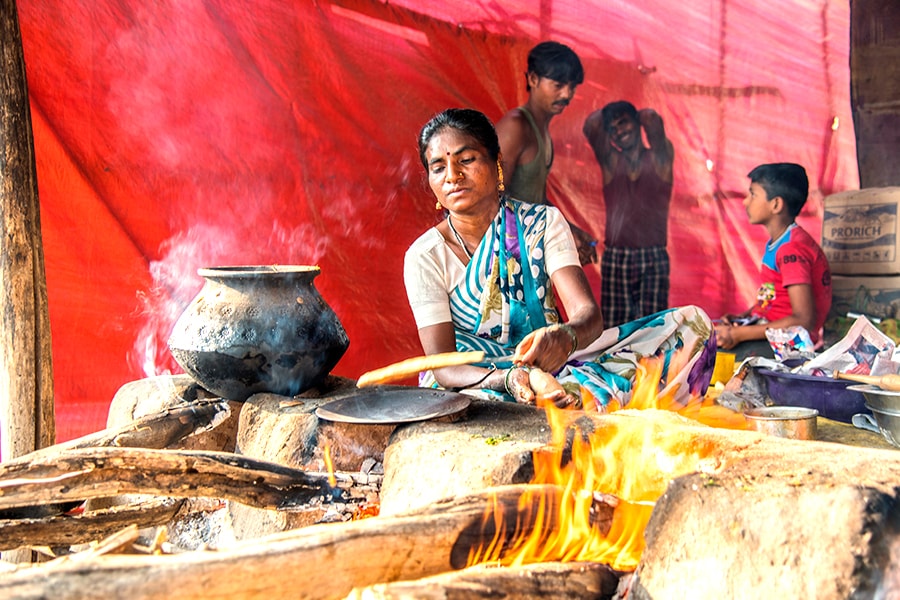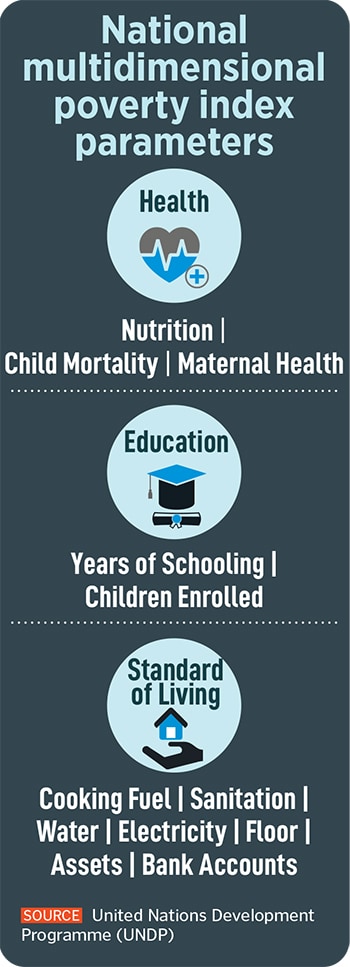
Explained: What is multidimensional poverty, and how does India fare?
Niti Aayog says multidimensional poverty, measured by multiple factors and not income alone, has declined by 17.89 percent in the last nine years
 About 24.82 crore Indians escaped multidimensional poverty in the past nine years, according to the latest report by Niti Aayog.
Image: Shutterstock
About 24.82 crore Indians escaped multidimensional poverty in the past nine years, according to the latest report by Niti Aayog.
Image: Shutterstock
About 24.82 crore Indians escaped multidimensional poverty in the past nine years, according to the latest report by Niti Aayog. Uttar Pradesh, Bihar, Madhya Pradesh and Rajasthan registered the largest decline—about 13.88 crore people—in multidimensional poverty. The report suggests a 17.89 percent decline in multidimensional poverty over the last nine years, as the number of people in living in this condition was 29.17 percent in 2013-14 and was 11.28 percent (about 15.5 crore Indians) in 2022-23.
What is Multidimensional Poverty?
The Global Multidimensional Poverty Index (MPI), also called the Alkire-Foster method, was developed by the Oxford Poverty & Human Development Initiative to measure the levels and intensity of poverty.The methodology uses three broad dimensions—health, education and living standards—to determine the levels of poverty in a country. The United Nations Development Programme has used this methodology to determine poverty levels in over 100 developing nations.
The MPI suggests that one or two factors, such as income or money, cannot capture the reality and intensity of poverty. People from different regions face different kinds of challenges. Multiple factors such as malnutrition, inadequate living conditions, lack of drinking water, and amenities such as electricity and schooling can contribute to the disadvantages of poor people. The MPI uses its multiple parameters to fully assess the situation in different regions and prepare a comprehensive report on poverty in a particular society.
 The Alkire-Foster method measures poverty levels using 10 health, education, and living standards parameters. Nutrition and child mortality are the two parameters of health, while years of schooling and children enrolled are the two parameters of education. Living standards are measured on the basis of six parameters: Cooking fuel, sanitation, water, electricity, floor, and assets.
The Alkire-Foster method measures poverty levels using 10 health, education, and living standards parameters. Nutrition and child mortality are the two parameters of health, while years of schooling and children enrolled are the two parameters of education. Living standards are measured on the basis of six parameters: Cooking fuel, sanitation, water, electricity, floor, and assets.








